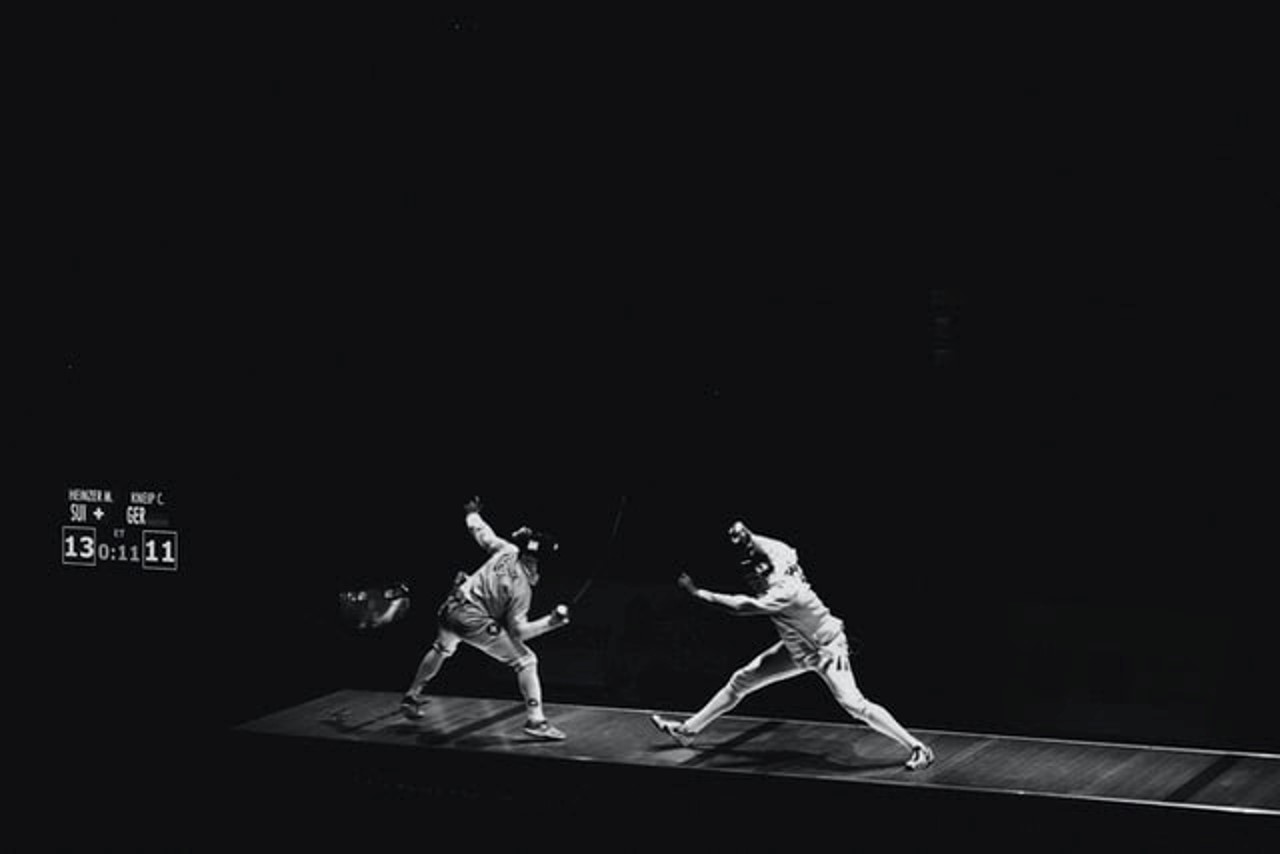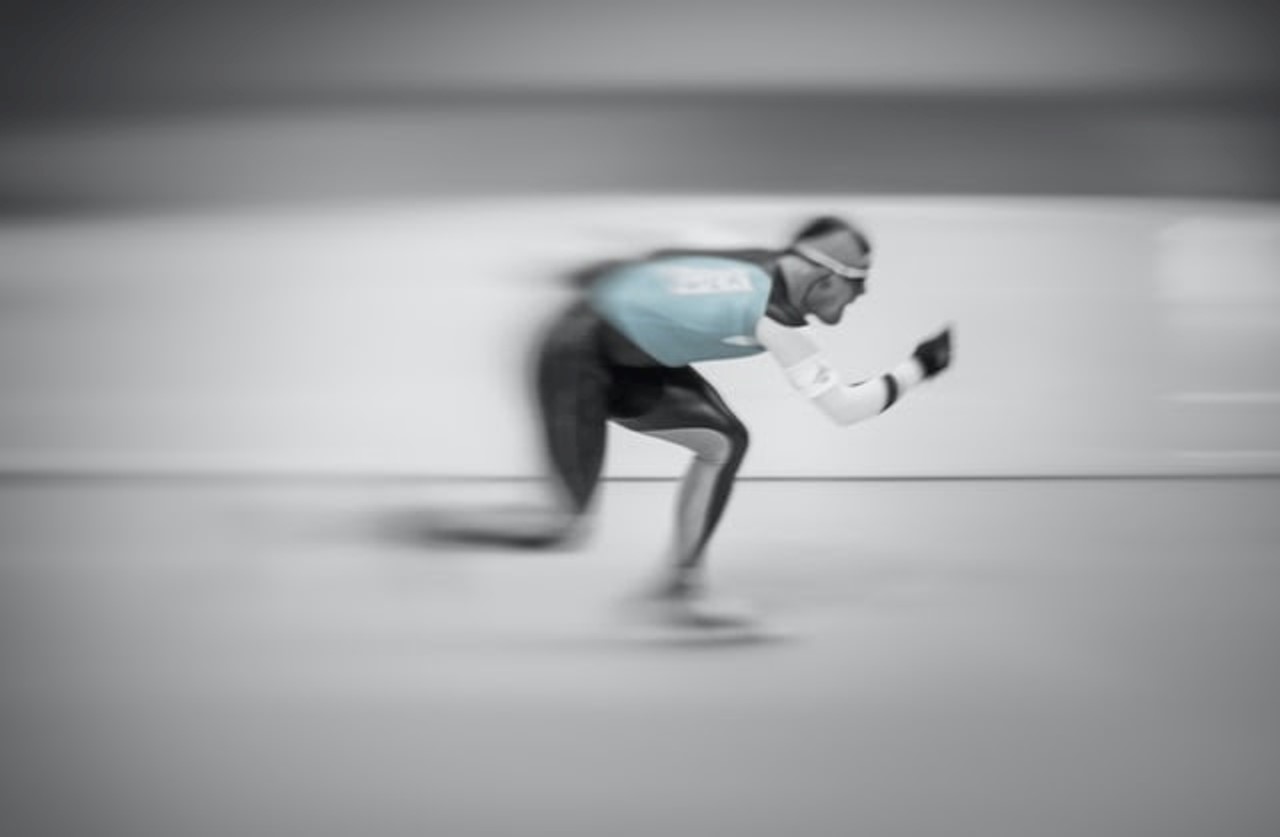A Deep Dive into Human Factors and the Olympics

Listen to this article.
A Deep Dive into Human Factors and the Olympics
Hey everyone, we’re here with a special edition of our deep dive series! In honor of the end of the 2020 Olympics, this week we are doing a special deep dive exploring human factors and ergonomics (HFE) in sports and how HFE can be seen in the judging, safety, and performance concerns that are central to the Olympics.
This is something a little new and different for us (don’t worry - we will return to our regularly scheduled episode follow-up deep dives this week!), so please let us know your thoughts about these sorts of special edition deep dives on other interesting topics, if you prefer our special editions over our episode follow-ups, or any areas you would like to see us cover in a special edition that we might not cover in the weekly show. Thank you!
What is HFE in Sports?
If we consider that the four big goals of human factors are effectiveness, efficiency, safety, and fun, it is no surprise that HFE has been steadily gaining ground in the arena of sports. As more people participate in a wider variety of sports and as sports competitions become even more demanding, the importance of studying ergonomics in sports continues to grow in importance.
Sports HFE touches on sports equipment, clothing and other wearable gear, technology, scheduling, training, rehabilitation, prevention of injuries, performance improvements, and the environment in which the sport is performed. Research into systems ergonomics in the context of sports performance and injury management has started to gain traction as well. Although HFE is often seen as only being applicable to office environments, both amateur and elite sports are beginning to see the value in embracing ergonomics.
Similar to HFE in sports, sport psychology has recently seen an increase in popularity. Some crossover areas between sports HFE and psychology can be seen in some of the priorities of research for sport psychologists: self-regulatory strategies of athletes operating in stressful competitive environments; risk-taking; perceptual-cognitive skills training for performance in dynamic, open sports; and the link between emotion and motor behavior.
Human Factors and the Olympics
HFE has long been a part of the Olympics, even if not in a showy role. For example, John Gould and Stephen Boies used human factors principles to design the 1984 Olympic Message System. They used behavioral principles including early interaction with users, early and continual user testing, and iterative design to create a computer system for over 15,000 people. Many of the people who would be using the system would have not used computers before, need to be able to contact over 150 different countries, understand different languages, have no opportunity to be trained, and lack familiarity with computer systems or push-button telephones. Both the understanding and implementation of HFE principles were crucial for designing this essential Olympics communication system.
This is just one example; we will dive a little deeper for more!
Judging and the Olympics
Image source: Micaela Parente | Unsplash
Judging for any sport is often a hot-button topic: disagreements in how a judge scored a performance, how a play was called, how rules are interpreted, and accusations of favoritism or corruption are common, especially in elite competitions like the Olympics. Technological advances have led to more judging being done by electronic sensors, but for the more subjective sports (e.g. figure skating, gymnastics, and diving), humans still do the majority of the scoring.
Of course, mistakes can happen. In the 1992 Barcelona Olympics, a scoring mistake cost Canadian synchronized swimmer Sylvie Frechette the gold medal when Brazilian Judge Ana Maria Da Silveira accidentally punched in a score of 8.7 instead of her intended score of 9.7. The judge tried to correct the error and appealed to the referees to change the score, but the original score was kept. It would take months of petitioning the Olympic committee after the Games ended to get the score fixed and Sylvie Frechette her gold medal.
The 2008 Beijing Olympics had its share of judging controversy, too. Taekwondo referee Chakir Chelbat was attacked by Cuban taekwondo champion Angel Valodia Matos over a judging dispute, resulting in a split lip that required stitches for Chelbat. The World Taekwondo Federation announced that an official inquiry would be held into the controversial judging of the Sarah Stevenson versus Chen Zhong bout (Stevenson was widely regarded to have won the bout, but the judges had not called it in her favor).
Yang Jin Suk, secretary-general of the World Taekwondo Federation, neatly summarized the human factors issues that can be seen in the judging of subjective sports: intentional mistakes of referees and judges, accidental mistakes, and mistakes from ignorance.
Bias, especially in the form of nationalism, is a major concern when it comes to judging. One study examined scoring data from individual judges for the 2002 Olympics’ figure skating and ski jumping events. They found that judges of the same nationality as the participant gave them scores 0.13 standard deviations higher than other judges. In the more subjectively-scored figure skating, this bias can translate into an average placement of 0.7 higher. Judges were found to vary their biases strategically depending on what the stakes were for the event, the scrutiny that would be given to the event, and the degree of the subjectiveness of the performance aspect being scored.
While many sports primarily rely on the skills of human judges to make calls during matches, some have begun integrating a challenge system that puts everything on pause while the judges watch a reply of the challenged call. For example, the 2016 Rio de Janeiro Olympics were the first time that volleyball and beach volleyball used the challenge system and video replays. Angelo Squeo, the director of beach volleyball for the international federation at the time, said that with the use of the challenge system, about 25 percent of calls are overturned. The average time for a review is about 30 seconds - just enough time for the crowd to get and stay excited about what the judges will say after watching the replay.
HFE can be used to address many of these concerns to help ensure that the judging that happens during the Olympics is as easy and efficient as possible. It can also be used to look back at where problems have occurred in the past to develop solutions to prevent or mitigate those scoring issues in the future.
Safety and the Olympics
Image source: Martin Rulsch | Wikimedia Commons
Safety is a major aspect of human factors, and, in recent years, has become a bigger concern in sports. Knowing human factors concepts and testing procedures can help with the development of safer equipment, clothing, and environment designs.
We can look at diving as an example. Have you ever wondered why they spray water onto the diving pools? They do it for safety: the water acts as a surface agitator, letting divers get a better idea of where the surface of the pool is so that they can better judge when they need to go into their rotations.
What about showers between dives? It can get chilly waiting between dives, so divers will hop in the showers or hot tubs to warm up and help keep their muscles loose.
Why do they bother drying off between dives? Part of the reason is to help them stay warm. Drying off also helps them to maintain their form when they spin - some divers even use tacky substances (e.g. iTac) on their bodies as an extra aid.
Beyond physical safety while performing a sport, the Olympics committees also consider harassment and abuse safety issues. Several Olympic commissions have been created to assess and safeguard athletes from harassment and abuse.
This year has brought an additional safety concern: COVID-19. Even before the games began, there were over 70 coronavirus cases tied to the Olympic Village. The International Olympic Committee (IOC) released COVID-19 playbooks detailing the safety measures that would be in place for the games this year. In the 96 hours before arriving in Japan, Olympic visitors were required to have two negative test results. On landing, they needed to produce another negative test result.
While on-site, Olympic athletes and coaches had to download location-enabled contact tracing apps to their phones. Movements were restricted to specific “bubbles” while visitors were in the country. There were no spectators allowed, foreign or domestic.
The Olympic Village hosted about 11,000 people. Athletes shared rooms, took daily COVID tests, and wore face masks at all times (when they were not eating, sleeping, training, or competing). If an athlete won a medal, this year they placed it around their own necks. Athletes who had finished all of their events and were done competing were required to leave Japan within two days of their last event.
With all of these safety measures in place, recent reporting tells us that there were 404 Games-related infections since July 1. Close to 600,000 screening tests were performed. The infection rate seems to have been only 0.02%. It is too soon to tell what specific precautions contributed to the low infection rate.
Performance and the Olympics
Image source: Vidar Nordli-Mathisen | Unsplash
HFE research can be highly valuable when it comes to improving athletic performance. We can think of all the ways we apply human factors to training, equipment, clothing, and the environment to help end-users achieve their goals efficiently, effectively, and safely (while having fun).
Advances in technology have led to significant performance increases in many sports over the years. These include:
- The evolution of pole vaulting pole materials from bamboo to aluminum to fiberglass, allowing vaulters to translate the energy of their run-ups into vaulting height more effectively
- A “superbike” made of a single structure of lightweight carbon fiber, one traditional wheel with spokes, one modern wheel of a solid disc, and an aerodynamic helmet
- Fields made of a high-performance polyethylene resin for the artificial turf for field hockey to increase shoe grip, reduce injuries, and contribute to better accuracy
- New swimsuits based on polyurethane that helped to reduce friction in the water
Changes to equipment that has been around for decades can have significant impact on performance and comfort. A 2012 study that looked at handgrip length and seat inclination on a hand bike vehicle found that ergonomics and aerodynamics present opposite impacts: lengths and positions that are good ergonomically tend to be worse in regards to aerodynamics. This indicates that certain positions and lengths may be better for some sports events than others, relating back to the human factors concept that context matters.
We can also look at more technological developments in gear and equipment such as wearable tech that allows athletes and trainers to get more precise data they can use to refine their training. Samsung made big news before the 2018 Winter Olympics in Pyeongchang with the reveal of its Samsung SmartSuit for Olympic short track speed skaters. The SmartSuit used sensors to send real-time information about the wearer’s body position to the coach. If the coach wanted the skater to change something about their position, the coach could use an app to send a vibration to the suit’s wrist. This feature allowed the coach to communicate immediately with the skater.
Sports performance HFE is a huge topic that covers many areas; we have only focused on a small sampling in this Olympic deep dive. In addition to gear and equipment, sports performance also extends to diet, training, environment, data analysis, and more. If you are interested in additional deep dives about HFE in sports performance, please let us know!
As HFE in sports continues to grow as an area of interest, we are sure to see more research come out that delves further into the judging, safety, and performance of athletes in elite competitions such as the Olympics. It is an exciting reminder that human factors is truly everywhere!
______________________________________________________________________________________________________
For more Human Factors Cast content, check back every Tuesday for our news roundups and join us on Twitch every Thursday at 4:30 PM PST our weekly podcast. If you haven't already, join us on Slack and Discord or on any of our social media communities (LinkedIn, Facebook, Twitter, Instagram).
Explore Some More
What is HFE in Sports?
- Astronauts are celebrating their own Summer Olympics in space (satellites, too)
- Engineers Bring Powerful Analysis to Swimming
- Human Factors and Ergonomics in Sport: Applications and Future Directions
- Human Factors Cast E137 - Neuralink Brain Computer Interfaces, Haptic Prosthetics, and Toyota's Accessible People Mover
- Sports Ergonomics: An important perspective of Sports Physiotherapy
- Why Olympic Rowers and Runners Have Different Physiques
Judging and the Olympics
- How are Olympic judges chosen – and how do we know they're fair?
- List of Olympic Games scandals and controversies
- Nationalism in Winter Sports Judging and Its Lessons for Organizational Decision Making
- On The Bright Side After Tragedy And Travesty In 1992, Sylvie Frechette Of Canada Is Thinking Only Good Thoughts In Atlanta
Safety and the Olympics
- Best Practice Measures To Protect Public And Athlete Health At The Tokyo Olympics
- Making strides towards a culture of safe sport
- Sport Safety and Risk Management for Coaches
Performance and the Olympics
- Ergonomic considerations for sports clothing – Human Kinetics
- From Lab to Olympics: Scientists Work to Improve Athletic Gear
- How Safety Protocols Could Impact Athletes at the Summer Olympic Games
- Human Factors Cast E077 - Disney's autonomous robots, Hippocratic Oath, SmartSuit
- Performance evaluation of participating nations at the 2012 London Summer Olympics by a two-stage data envelopment analysis
- Understanding The Improvements In Olympic Winning Performances
Photo by Frans Van Heerden from Pexels (left)
Photo by Simon Connellan from Unsplash (right)

























